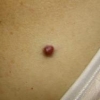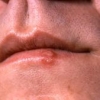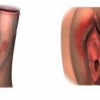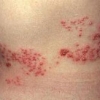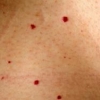Efficacia della terapia con la luce a basso livello utilizzando la luce a infrarossi da 1072 nm per il trattamento dell'herpes simplex labiale
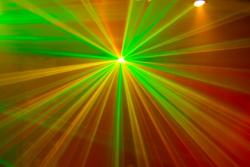 Alcune ricerche recenti hanno dimostrato che la terapia con luce a basso livello (LLLT), in particolare la luce a infrarossi da 1072 nm, è efficace nel ridurre la durata degli episodi di herpes simplex labiale (HSL) e nel migliorare il processo di guarigione.
Alcune ricerche recenti hanno dimostrato che la terapia con luce a basso livello (LLLT), in particolare la luce a infrarossi da 1072 nm, è efficace nel ridurre la durata degli episodi di herpes simplex labiale (HSL) e nel migliorare il processo di guarigione.
Metodi
Si è trattato di uno studio clinico prospettico, randomizzato e controllato con placebo che ha valutato l'efficacia di un dispositivo diodo ad emissione luminosa da 1072 nm per il trattamento di HSL. In totale, sono stati inclusi 87 pazienti con HSL ricorrente, che poi stati divisi casualmente in due gruppi. Tutti i soggetti hanno ricevuto un trattamento di 3 minuti con una luce ad infrarossi da 1072 nm o con una luce placebo (falsa), tre volte al giorno per 2 giorni. I dispositivi utilizzati su entrambi i gruppi erano identici nell'aspetto e non potevano essere riconosciti né dai pazienti né dai ricercatori: inoltre, la luce da 1072 nm era invisibile all'occhio umano. L'endpoint primario è stato il tempo di guarigione, definito come il momento in cui le lesioni da HSL si sono risolte completamente e in cui la pelle sottostante si è definitivamente riepitelizzata; al contrario, l'endpoint secondario è stato definito come la formazione delle croste sulle lesioni.
Risultati
Il tempo medio di guarigione per il gruppo attivo è stato di 129 h, rispetto al significativo (P = 0.01) tempo di 177 h per il gruppo di controllo. Non c'è stata alcuna differenza tra i due gruppi per il tempo medio di formazione delle croste (P = 0.66).
Conclusioni
Rispetto al trattamento con placebo, il trattamento delle lesioni da HSL con luce ad infrarossi da 1072 nm ha ridotto significativamente il tempo di guarigione.
Storia della pubblicazione:
Titolo: Evaluation of the efficacy of low-level light therapy using 1072 nm infrared light for the treatment of herpes simplex labialis
Rivista: Clinical and Experimental Dermatology. doi: 10.1111/ced.12069
Autori: G. Dougal, S. Y. Lee
Affiliazioni:Virulite Distribution Ltd, Evans Incubation Centre, Newton Aycliffe, Durham, UK Hayan-nara Dermatology Group, Seoul, South Korea
Abstract:
Background Recent research has shown that low-level light therapy (LLLT) using 1072 nm infrared light is effective in reducing the duration of herpes simplex labialis (HSL) episodes and enhancing the healing process. Methods This was a prospective, randomized, placebo-controlled, clinical trial to evaluate the efficacy of a 1072 nm light-emitting diode device for the treatment of HSL. In total, 87 patients with recurrent HSL were recruited and randomly divided into two groups. Subjects received a 3-min treatment with either 1072 nm infrared light therapy or placebo (sham) light therapy three times/day for 2 days. The devices used for both groups were identical in appearance and could not be differentiated by volunteers or researchers, and 1072 nm light is invisible to the human eye. The primary endpoint was healing time, which was taken as the time for the HSL lesions to resolve fully and for the underlying skin to become completely re-epithelialized, and the secondary endpoint was lesion crusting. Results The median time to healing for the active group was 129 h, compared with 177 h for the control group, which was significant (P = 0.01). There was no difference between the two groups for median time to lesion crusting (P = 0.66). Conclusions Compared with placebo treatment, the treatment of HSL lesions with 1072 nm infrared light significantly reduced healing time.
https://www.youtube.com/@djfdm

